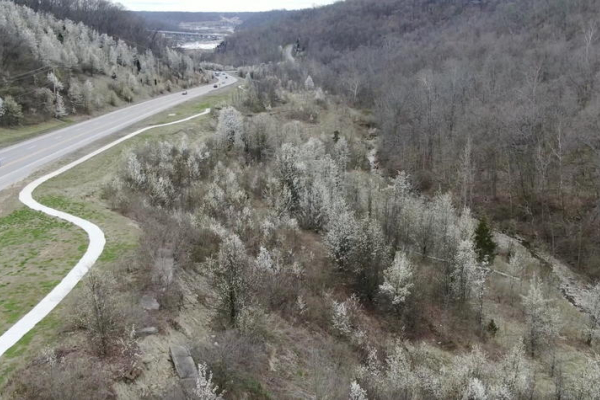Daniel Vivian: 2025-26 University Research Professor Q&A

Daniel Vivian, Ph.D., associate professor in the Department of Historic Preservation in the University of Kentucky College of Design, has been honored as a 2025-26 University Research Professor.
Vivian’s research explores historical memory of slavery during Jim Crow. He is the author of “A New Plantation World: Sporting Estates in the South Carolina Lowcountry, 1900-1940” (2018) and has published in Winterthur Portfolio, The Public Historian, Ohio Valley History and The South Carolina Historical Magazine. He is co-editing a collection on modern architecture in the South and is writing about the underrepresentation of marginalized groups in the National Register of Historic Places.
His research has been funded by the National Endowment for the Humanities, the UK Sustainability Challenge Grant Program, the Hagley Museum and Library and the Maryland Historical Society. He currently serves on the boards of the Southeast Chapter of the Society of Architectural Historians and the Blue Grass Trust for Historic Preservation and he is a member of the African American History Advisory Committee at Ashland, The Henry Clay Estate.
Vivian joined UK in 2017 and is also a faculty affiliate of the Department of History and the African American and Africana Studies Program of the UK College of Arts and Sciences.
He spoke with UKNow about his latest honor as a University Research Professor in this Q&A.
UKNow: What does it mean to you to be recognized as a University Research Professor?
Vivian: It’s a great honor. I have worked hard to stay productive as a scholar, and it is gratifying to be recognized for that work. I am heartened and very pleased.
UKNow: How will the professorships program advance your research?
Vivian: The professorship will allow me to travel to archives in South Carolina and New York City. I will spend two weeks at the South Carolina Historical Society in Charleston to study the papers of Gertrude and Sidney Legendre, wealthy members of the “winter colony” who established large sporting estates in coastal South Carolina during the first half of the 20th century.
I plan to publish an edited, annotated version of Sidney Legendre’s diary from the late 1930s and early 1940s, the most detailed account I’ve found of life on a sporting plantation. It offers insight into what the Legendres and other winter colonists did during their stays in the region, their relations with local people and how they saw the region’s past. They recognized slavery and its legacy as a lasting presence in the landscape and in society and commented extensively on both.
In New York City, I will research the records of Taliesin Associated Architects (TAA) at Columbia University. Formed by Frank Lloyd Wright’s apprentices after his death in 1959, TAA continued his practice. Though often dismissed for reusing Wright’s designs, I believe their work deserves more attention.
UKNow: What inspired your focus on this area of research?
Vivian: I’ve long been interested in how slavery was remembered during Jim Crow, especially as an embodied presence in the southern landscape — how people saw, treated and sometimes memorialized its physical remains. While much has been written about Confederate monuments and select tourist sites, the broader picture is less known. My interest in the Legendres stems from this work, especially my first book, “A New Plantation World,” which examined how wealthy northerners transformed former plantations into winter retreats and shaped memory of slavery in the region.
My interest in TAA grew out of pure curiosity. Their first major commission, the Lincoln Income Life Insurance Building in Louisville, caught my attention soon after I moved to Kentucky in 2010. Though often labeled a “Wright design,” its story is more complex. I have an essay on the building coming out soon and want to ask similar questions about other early TAA projects to better understand how the firm interpreted and extended Wright’s legacy.
UKNow: How does your research impact Kentucky?
Vivian: Research keeps my teaching fresh by prompting new questions and perspectives. It deepens my thinking and helps me better engage students, regardless of the outcome.
Since I am in the Department of Historic Preservation, my scholarship tends to have some sort of public dimension. While I certainly write for other scholars, I think a lot about how to share my research and knowledge with the public. My colleagues and I do a lot of work to make history meaningful for Kentucky communities. I serve on the board of the Blue Grass Trust for Historic Preservation, for example, and one of the projects I’m most proud of is the interpretive panels I helped write for Huntertown Community Interpretive Park in Versailles. Huntertown was a rural African American community that formed in the early 1870s and survived until the early 2000s. Flooding made the site uninhabitable, so citizens and Woodford County officials decided to turn it into a municipal park. I worked with a local historian, Sioux Finney, to create interpretive displays that tell the story of Huntertown.
About the University Research Professors
Each year, the University of Kentucky Board of Trustees approves a cohort of faculty as University Research Professors. The distinction recognizes excellence in work that addresses scientific, social, cultural and economic challenges in Kentucky and the world. College leadership developed criteria for excellence within their area of expertise and then nominated faculty who excelled at these criteria. Each University Research Professor receives a one-year award of $10,000.

